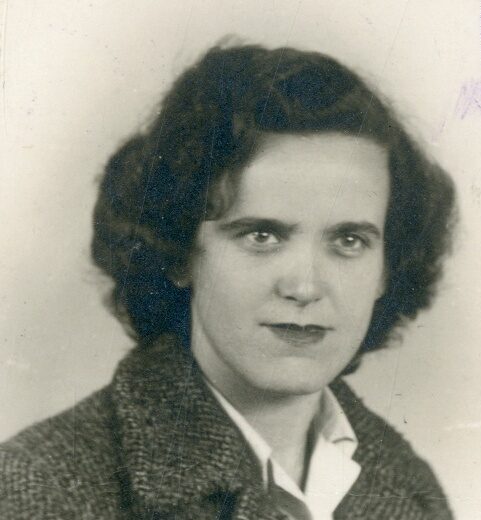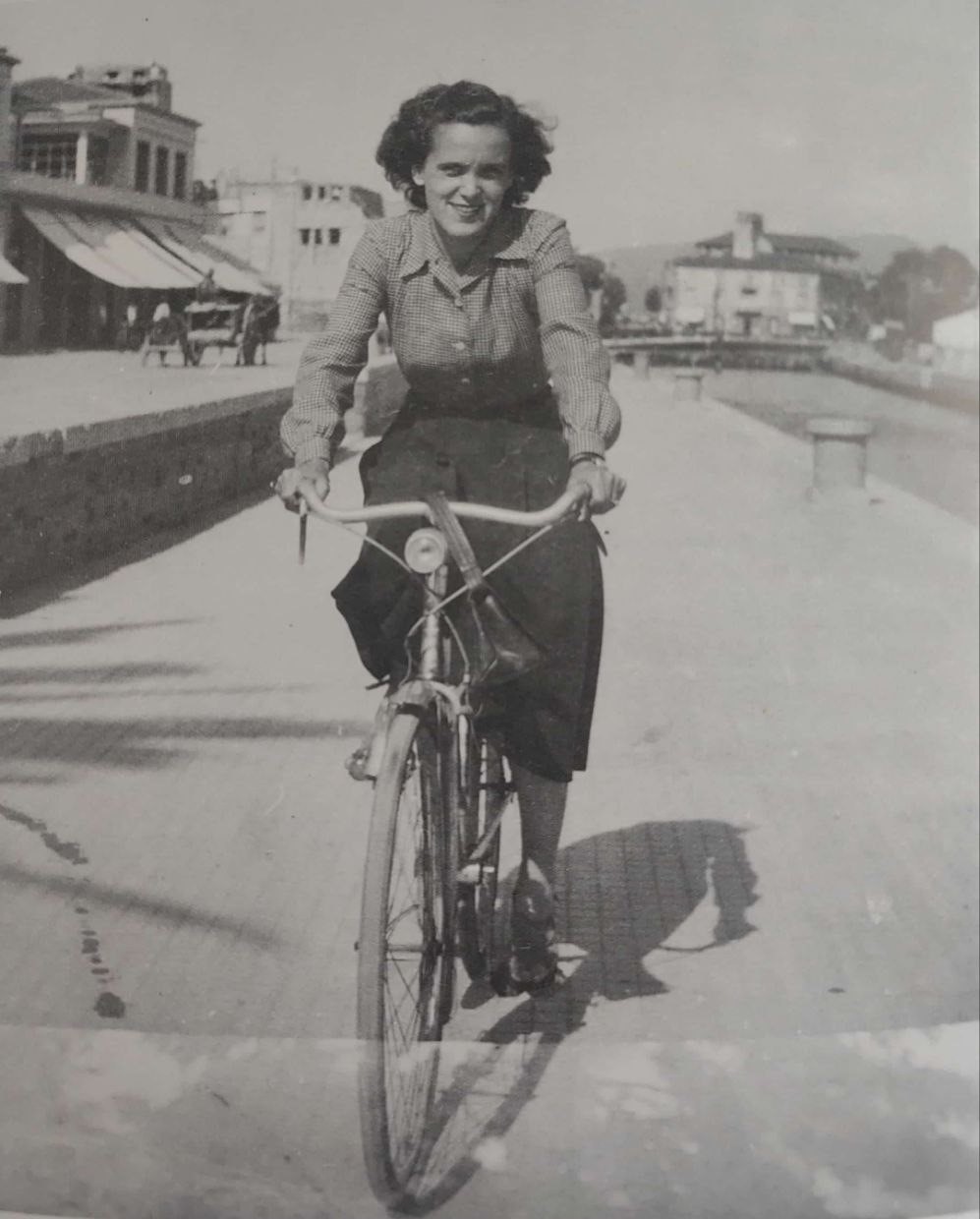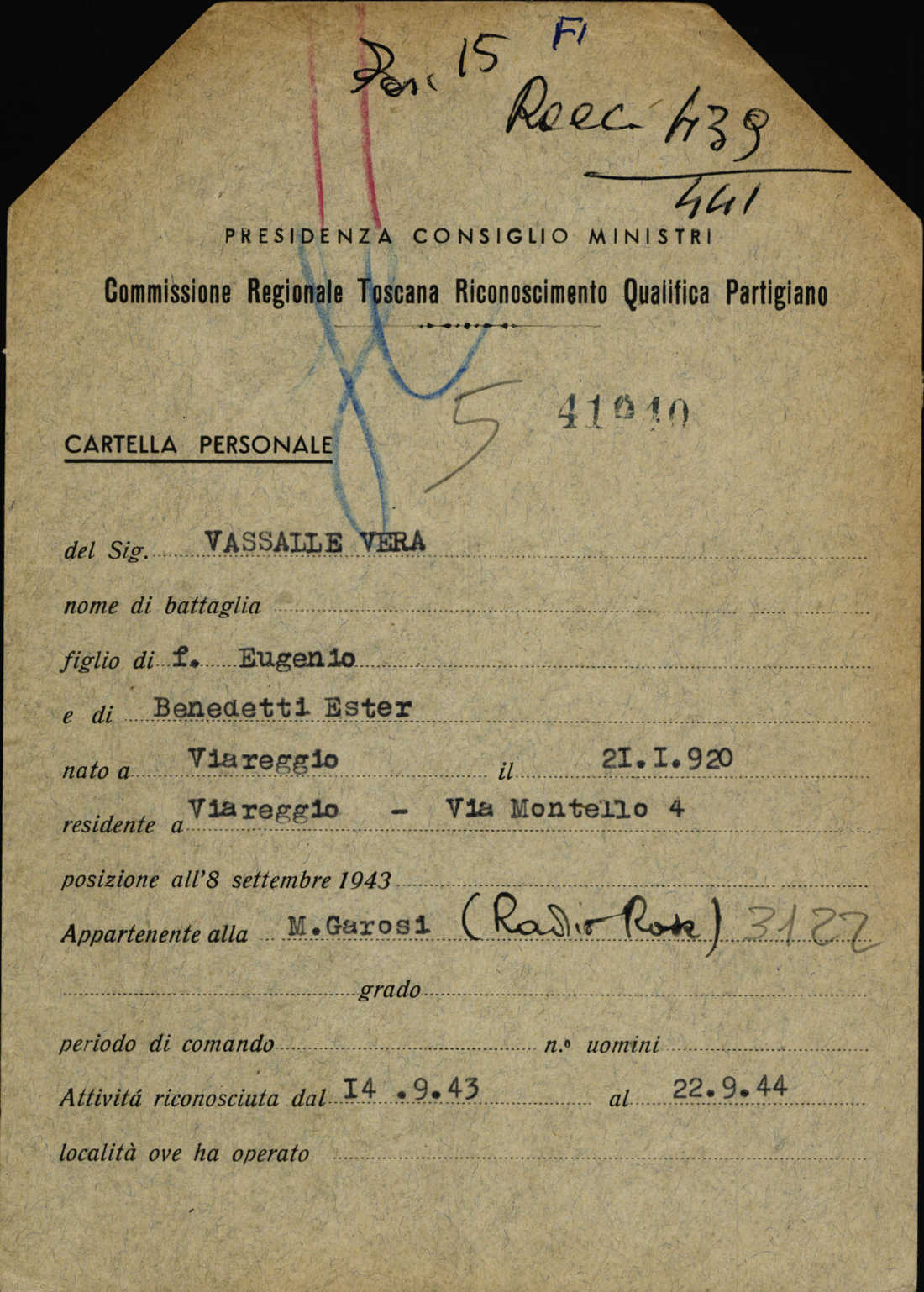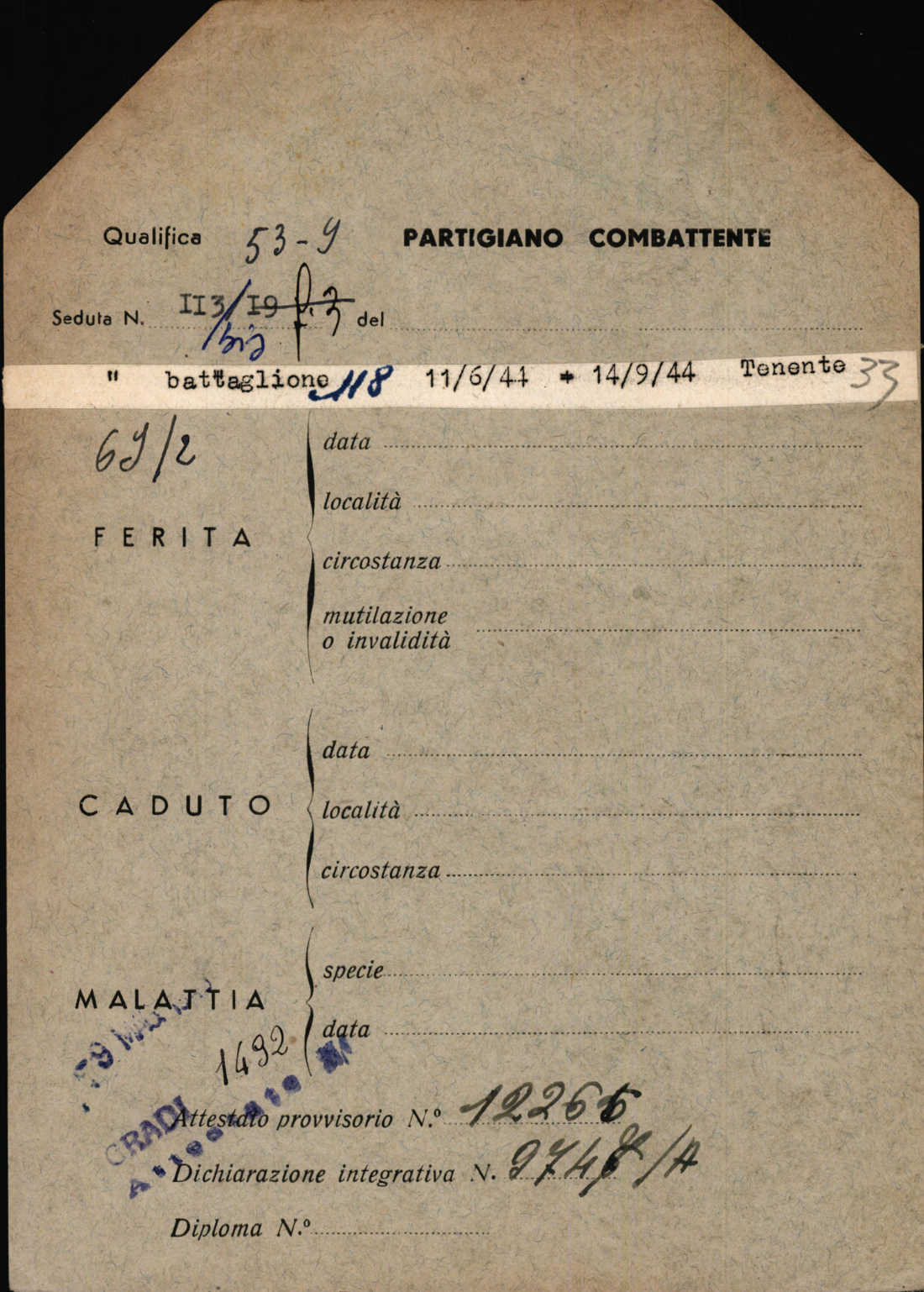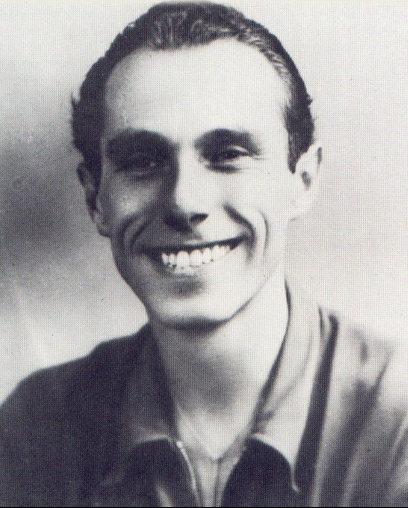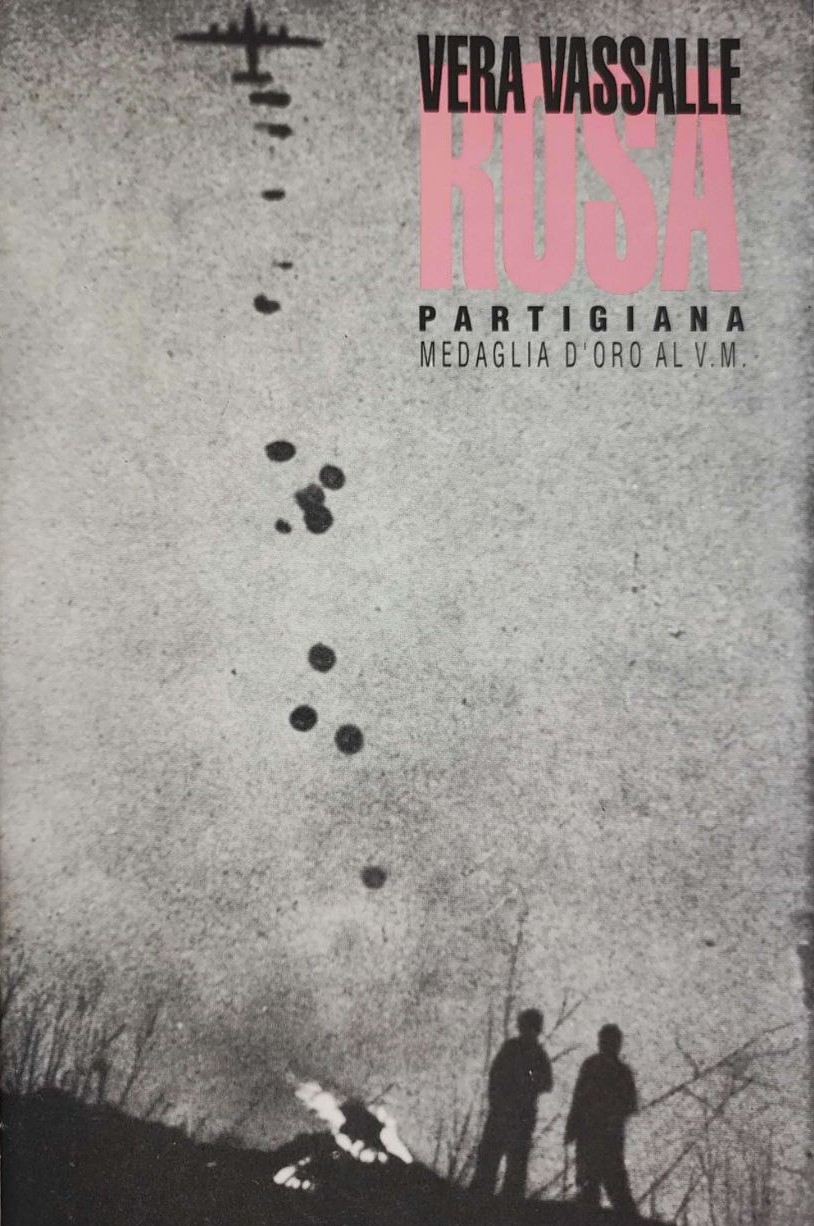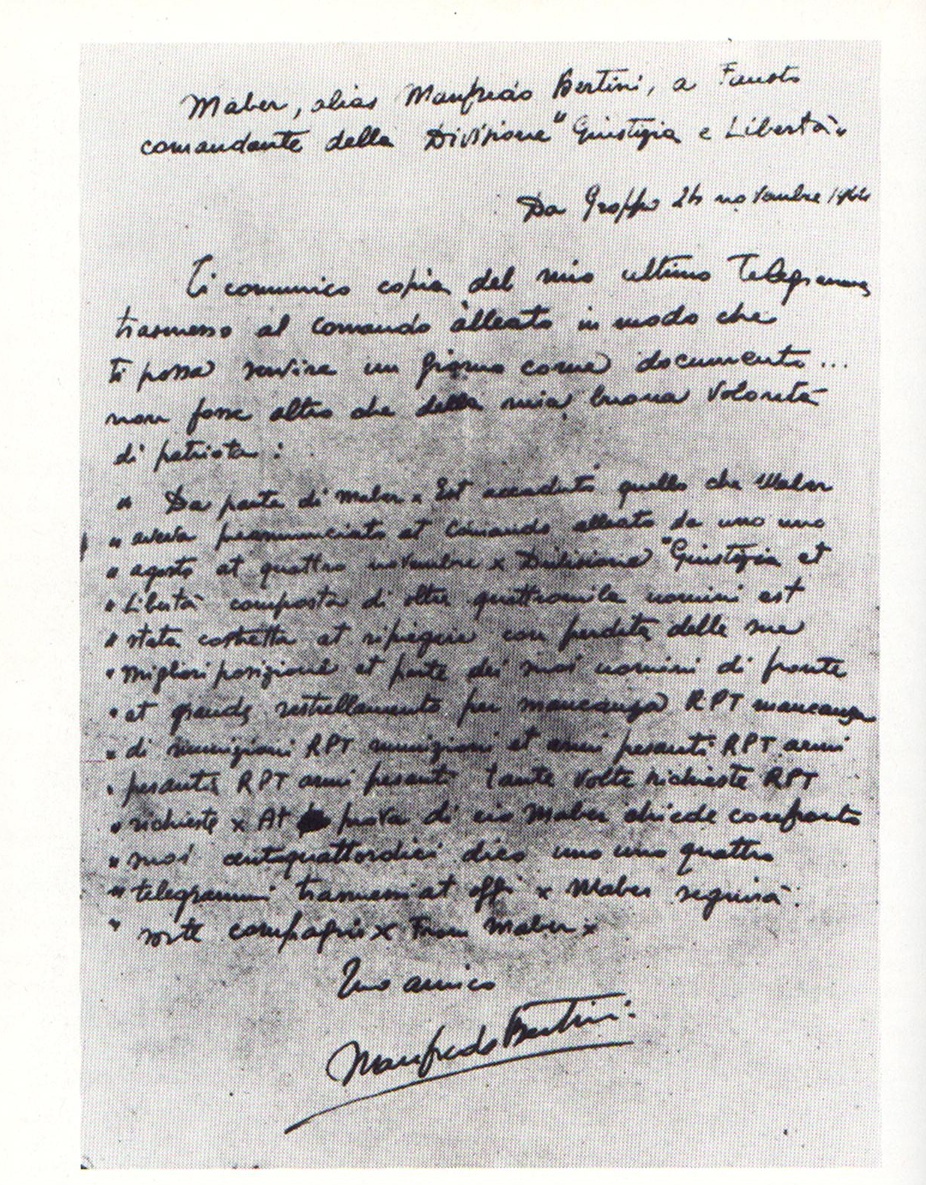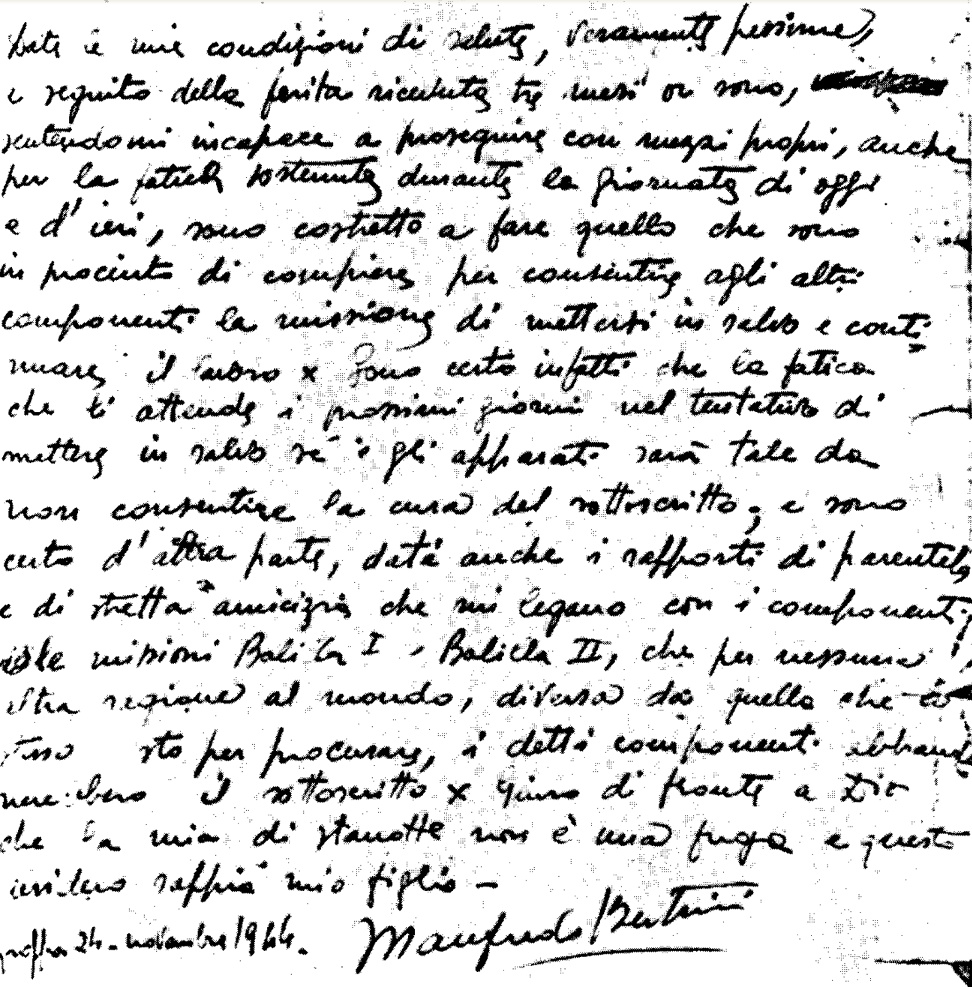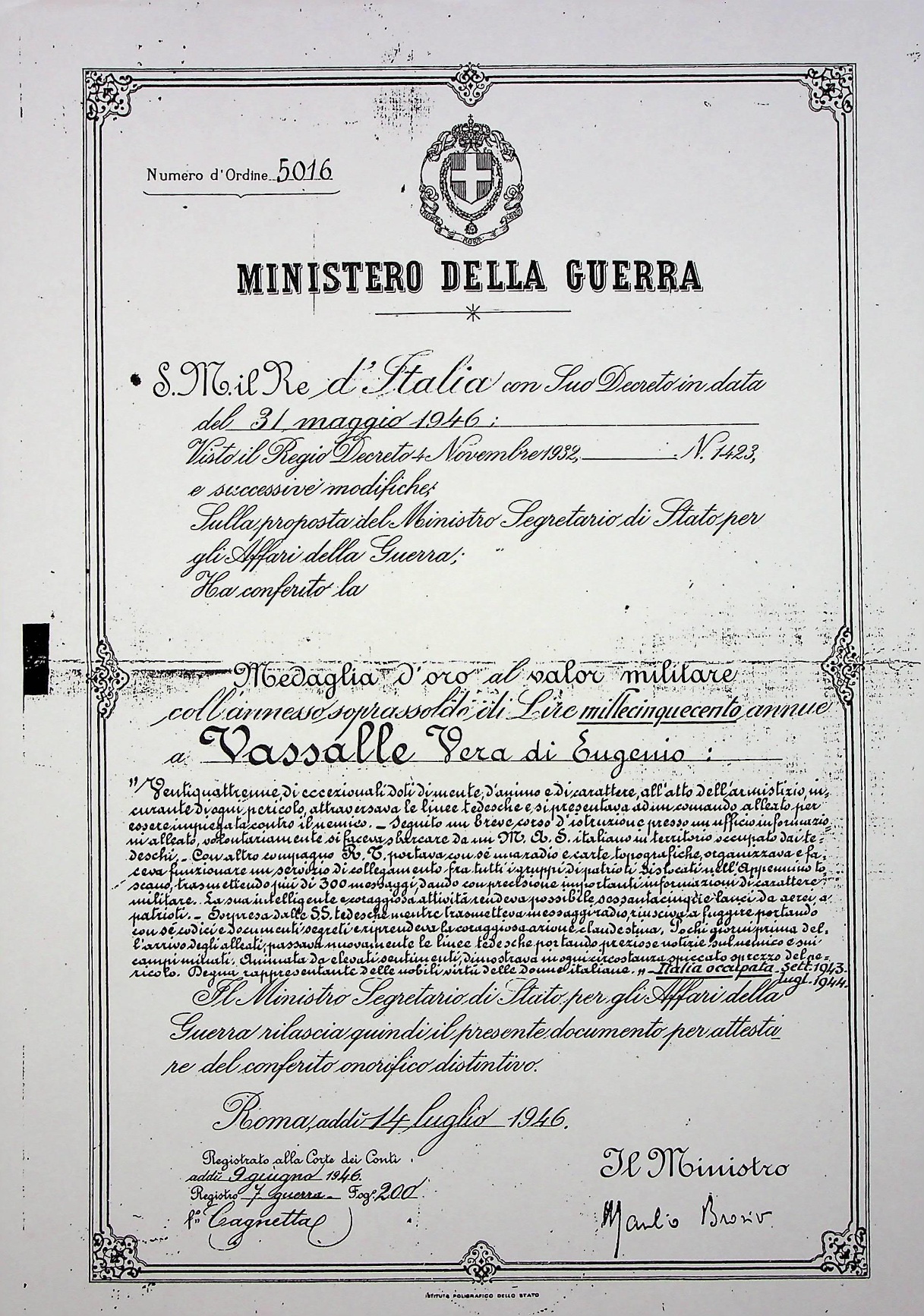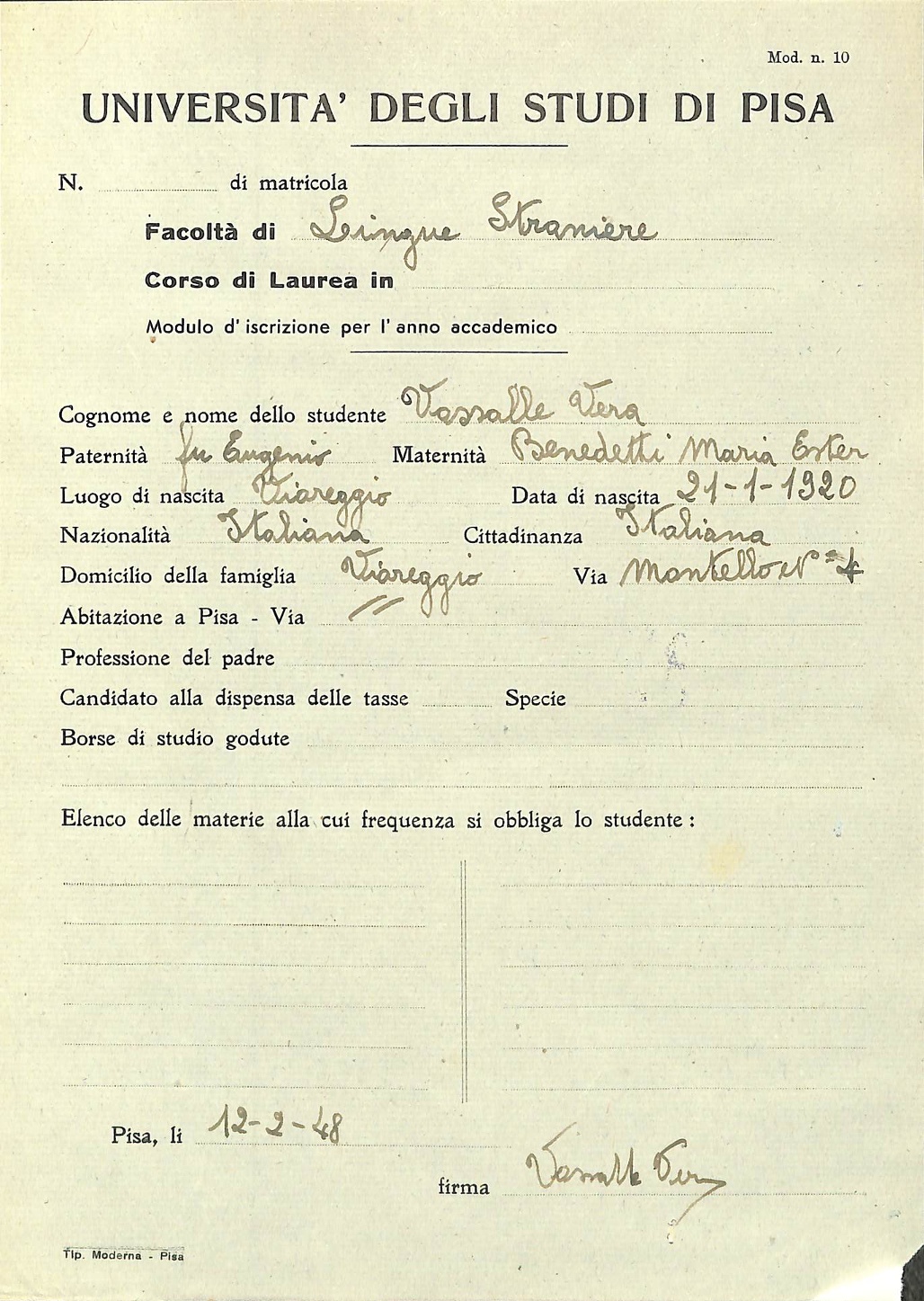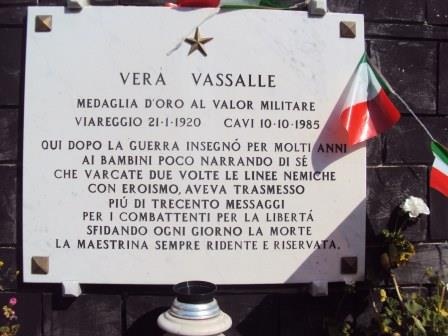In the hectic days of September 1943, when the first partisans were beginning to settle in the mountains, some of the problems that would later be a constant of the liberation movement emerged clearly: the lack of weapons, ammunition and basic equipment. It was therefore proved necessary to take action in order to get in touch with the Anglo-American commands, and at Bertini’s suggestion the CLN [Comitato di Liberazione Nazionale, National Committee for Liberation] decided to initiate what was called “Operation Gideon”. The plan designed that one person was supposed to be venturing on a solo trip across the front lines to establish a liaison with the Allies, inform them of the situation in Versilia and to find a solution to the problems of the bands. Vera Vassalle, who from then on assumed the battle name “Rosa,” was chosen to carry out the operation, because she possessed the right qualities of responsibility and ingenuity, and because as a woman and due to her physical characteristics – limping due to poliomyelitis – she was able to go more unnoticed or at least could hardly arouse suspicion of being a resistor. Therefore, on September 14th she left Viareggio for southern Italy by various makeshifts and taking numerous risks. She arrived after two weeks in the Allied camp, from where she was transferred to the headquarters of the Office of Strategic Services (Oss) in Naples. Here the American intelligence services offered her to become an Oss agent with a mission to be carried out from Viareggio.
Thus she began training in a special course, aimed at the use of radio transmitters and knowledge of information system notions. Within a few weeks, the training was perfected and a new eventful journey began for Vassalle to return to Viareggio. She was entrusted with a briefcase that contained a radio transmitting apparatus, which would be crucial for later connections with the Allies. A briefcase that, if discovered by Nazis or Fascists during the voyage, would have meant self-accusation and a certain condemnation. Vassalle was put ashore on the morning of January 18, 1944, on the Maremma coast, in the middle of occupied territory. She did not arrive in Viareggio until the following day, after travelling by different means, making long stretches on foot and risking searches on several occasions. At the end of January 1944 the Radio Rosa mission was to begin for which “I was in charge of providing military information to the Allies and preparing launching camps for materials and men, in the area between Livorno and Genoa”. Now Vassalle was the officer of the 2677th Oss Regiment.
Radio Rosa was not the only Italian intelligence mission at the service of the Anglo-Americans. Indeed, there were several individuals and groups who in the same manner as Vassalle acted as liaisons between Allied and partisan formations, receiving instructions, relaying information on military operation zones through a counter-intelligence network, and coordinating supplies to partisans through airdrops. The commitment of those who made themselves available was dense with responsibility. On one hand, the trainings had limited and accelerated time frames, which still required a good deal of courage and technical knowledge, and on the other hand the agents had to have logistical and operational skills in order to be useful to the Resistance and to make the needs of the territories understood by the Allies, who were not familiar with the different dynamics.
Due to some initial inconveniences given the lack of transmission plans, which got lost by mistake by the recruited radio telegrapher (rt), the equipment could only be used in March. This slowdown cost Vassalle a new trip, this time to northern Italy to request another radio telegrapher with new radio frequencies and transmission plans. She was assured by the Allies that there would be a landing in Genoa in the following days with what was requested, but the landing did not take place. In the meantime, Vassalle’s training comrades took steps to get in touch with Domenico Azzari “Candiani”, one of the very first rt parachuted by the Allies behind enemy lines, who had been operating with a radio in the Lunigiana areas on the “Rutland” mission since October 22nd 1943. Thanks to Azzari’s intervention, coordinates were handed over for an airdrop with the watchword “for those who do not believe,” which would supply the Versilia formations.
Radio Rosa really began to broadcast with the arrival of the rt Mario Robello “Santa” with whom Vassalle worked successfully, initiating an intense activity that allowed numerous airdrops of weapons and supplies for the Tuscan and Ligurian formations. It is estimated that over 300 messages were sent and 65 airdrops were carried out by the Allies in Versilia. “As soon as the transmissions with the base began, Manfredo and I took care to make contact with the local patriot formations, in order to organise safe receiving areas”. Stella Palmerini, a contributor to Radio Rosa, recalls: “When the Red Mission moved into my house, Vera entrusted me with the radio, and from that moment on I began to realise that this was more serious than I had imagined before. As soon as the broadcasts were over, I would transport the radio, hidden inside my school bag, to another nearby house. No one ever suspected that inside the satchel might be the device. The transmissions were made according to a cipher that Mario Robello had. […] Whenever Mario was to transmit, I would go out and attach the antenna on the haystack; then when he finished transmitting I would go and take it off. I was receiving the messages that the Radio transmitted to the Allies from the various informants, who would come all the way to my house, but would not come in. They were wandering around and I, as soon as I saw them, would go to meet them. We would stop as if we were talking about futile things, a conversation in short, and while we were talking they would pass the message to me, which I would immediately take to Robello who, after encrypting it, would transmit it. During the transmission, I would mount guard outside. Mario gave me a gun and a hand grenade: “As soon as you hear a suspicious noise,” he said, “be ready to shoot and throw the bomb”. […] I must say that every time we transmitted or received it was an exciting moment, as well as when we learned that the enemy’s military targets we had reported had been hit.

